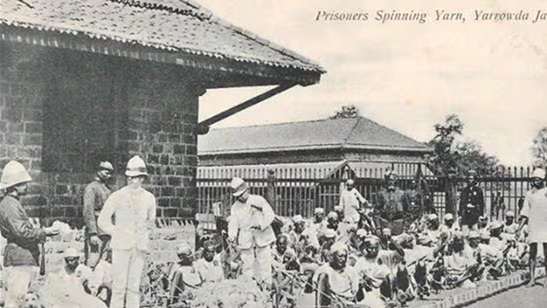- The Indian prison system is a legacy of the colonial era.
- It was created under the Prisons Act, 1894, which primarily focused on punishing offenders and instilling fear.
- However, after independence, the Indian Constitution guaranteed Fundamental Rights such as Equality (Article 14), Freedom (Article 19), and Right to Life and Personal Liberty (Article 21).
- Hence, the priority of prison administration should not only be punishment but also reformation, rehabilitation, and reintegration of prisoners into society.
- Recently, the Ministry of Home Affairs made amendments to the Model Prison Manual, 2016 and the Model Prisons and Correctional Services Act, 2023, which mark a significant step in this direction.
- Provisions regarding the abolition of caste-based discrimination, ban on manual scavenging, and special facilities for women and transgender prisoners make these reforms historic.

Why are Prison Reforms in News?
- In the case of Sukanya Shanta vs. Union of India, the Supreme Court directed the elimination of caste-based discrimination inside prisons.
- In compliance, the Ministry of Home Affairs introduced reforms in the division of work and categorization of prisoners.
- This initiative reinstates the core constitutional values of equality and dignity.
Major Amendments and Provisions
- Prohibition of Discrimination
- No caste or social status-based discrimination in prisoners’ work, living arrangements, or treatment.
- Ban on Manual Scavenging
- The Prohibition of Employment as Manual Scavengers Act, 2013 will also apply to prisons.
- Prisoners will no longer be forced to clean sewers and septic tanks.
- Provision of Special Prisons
- Establishment of semi-open and open prisons, where prisoners can work and undergo rehabilitation in a controlled environment.
- Corrective Incentives
- Good conduct to be rewarded with parole, furlough, and remission of sentence.
- Temporary release under electronic surveillance (e.g., GPS tagging).
- Rehabilitation and Skill Development
- Vocational training and employability-oriented education.
- Assistance in reintegrating prisoners into society post-release.
- Special Facilities
- Maternity and healthcare services for women prisoners.
- Safe and separate housing for transgender inmates.
Need for Prison Reforms
- Colonial Burden of Law
- In Ramamurthy vs. State of Karnataka (1996), the Supreme Court highlighted the need to replace the 1894 Act.
2. Overcrowding
- Prison of India Report 2024:
- Total prisoners – 5.73 lakh
- Capacity – 4.36 lakh
- Occupancy level – 131.4%
- 75.8% are undertrial prisoners.
3. Judicial Delay and Bail Issues
- Bail rejection rate in sessions courts – 32.3%.
- Prolonged detention of undertrials violates fundamental rights.
4. Inhuman Conditions
- Lack of hygiene and medical facilities in most prisons.
- Only 40% of prisons have sanitary napkins; merely 18% provide women-specific facilities.
5. Condition of Women Prisoners
- State prison manuals lack reproductive rights provisions.
- Inadequate facilities for women prisoners living with children.
6. Death Penalty Concerns
- Between 2006–2022, only 0.3% of death-row convicts were executed.
- Delay causes mental agony and violates international human rights standards.
7. Caste-based Discrimination and Bonded Labour-like Practices
- Division of prison work based on caste and practices like manual scavenging still persist.
Steps Taken So Far
- Fast-Track Courts: For speedy disposal of pending cases.
- NHRC: Monitoring the rights of prisoners.
- Model Prison Manual, 2016: Guidelines for reform-oriented provisions.
- Justice Krishna Iyer Committee (1987): Report on women prisoners.
- E-Prison System: Digital prisoner management.
- FASTER System: Quick delivery of bail orders.
- ICJS: Plan to link courts, police, and prisons.
India’s Legal Framework
- State List (Article 246, Seventh Schedule, Entry 4) – Prisons are under the jurisdiction of State Governments.
- Prisons Act, 1894 – A colonial-era law, still in force in most parts of India.
- Model Prison and Correctional Services Act, 2023 – Provides guidance for new reforms.
- BNSS, 2023 –
- Section 479: Bail for undertrial prisoners incarcerated for long periods.
- Sections 289–300: Provisions for plea bargaining.
Global Standards and India
- Nelson Mandela Rules (2015) – Minimum standards for the treatment of prisoners.
- Bangkok Rules (2010) – Special provisions for women prisoners.
- Tokyo Rules (1990) – Recommendations on non-custodial measures.
- India’s Position – India has gradually adopted these standards, but much more remains to be done.
Way Forward
- Judicial Reforms: Make the bail system simpler and more humane.
- Prison Overcrowding Management: Promote open prisons and alternative punishments such as community service.
- Human Resource Reforms: Enhance training and sensitivity among prison staff.
- Rights of Women and Transgender Persons: Ensure health, reproductive rights, and a safe environment.
- Use of Technology: Employ digital tools in surveillance, case tracking, and rehabilitation programs.
- Equality-Oriented Approach: Manage prisons without caste or class-based discrimination.
Conclusion
- Prison reforms in India are not merely a legal matter, but a human rights and social justice issue.
- The focus should shift from punishing offenders to reforming and reintegrating them into society, which is the hallmark of a democratic and humane nation.
- Today, there is a pressing need for India to move its prison system away from a colonial punitive framework towards a rights-based and rehabilitation-centric model.
- This alone would reflect the true spirit of our Constitution and international human rights standards.



